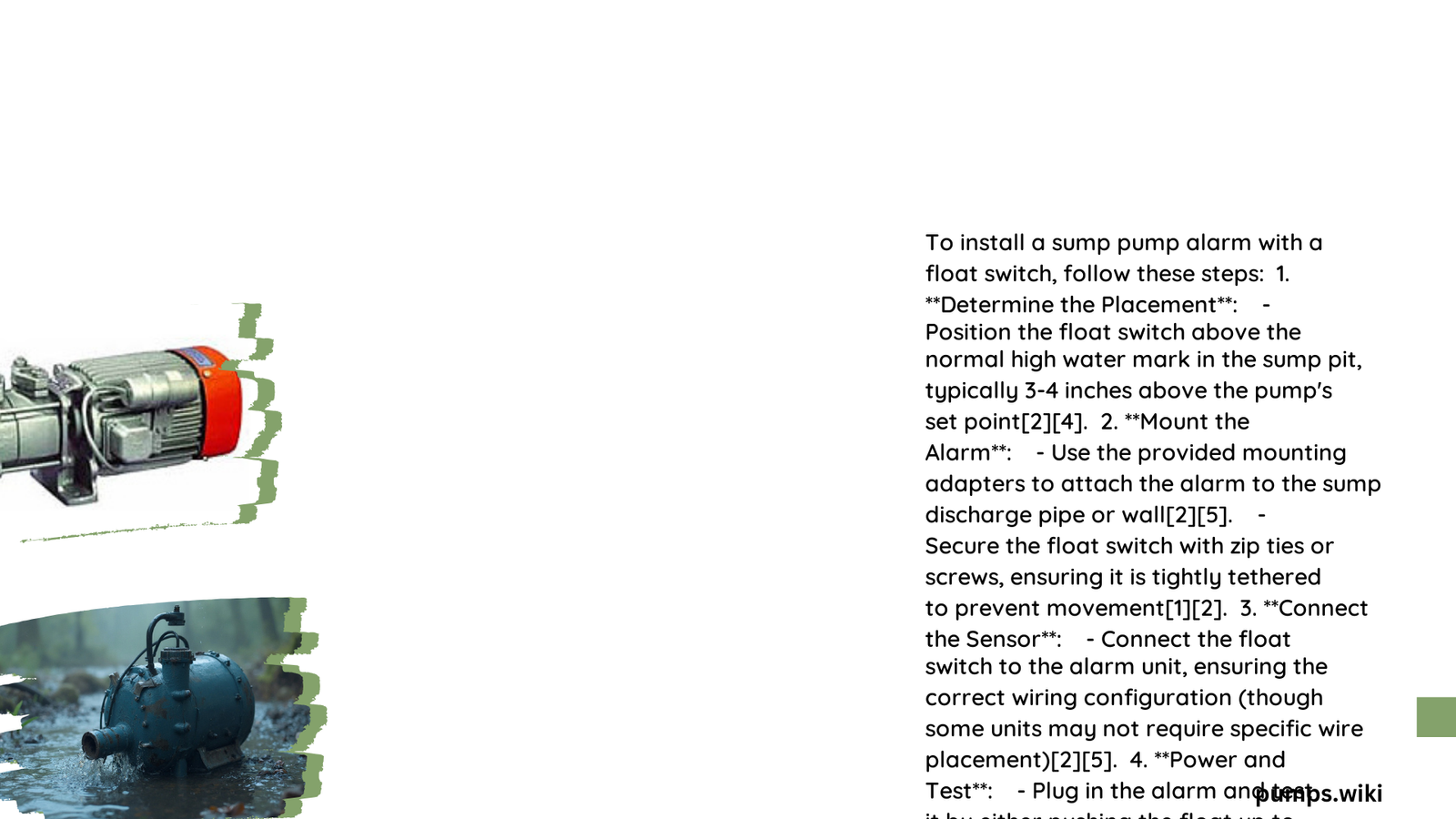Installing a sump pump alarm with a float is crucial for preventing basement flooding and water damage. This guide covers the step-by-step process of installing a float-activated sump pump alarm, including necessary tools, placement considerations, and troubleshooting tips. Learn how to protect your home from potential water disasters with this essential safety device.
What is a Sump Pump Alarm with a Float?
A sump pump alarm with a float is a device designed to alert homeowners when water levels in their sump pit rise to potentially dangerous levels. The float mechanism activates the alarm when it reaches a certain height, providing an early warning system for sump pump failure or excessive water inflow.
What Tools and Materials are Needed for Installation?

Before beginning the installation process, gather the following items:
- Sump pump alarm unit
- Float switch
- Mounting adapters (e.g., zip ties, screws)
- 9V battery (if applicable)
- Wire cutters and strippers
- Small flathead screwdriver
Having these tools on hand will ensure a smooth installation process.
Where Should the Sump Pump Alarm be Installed?
The ideal location for a sump pump alarm is:
- Near the sump pit
- In the basement or crawl space
- At a height between 48 and 66 inches above floor level
This placement ensures the alarm is easily audible and visible while remaining protected from potential water damage.
How to Install the Float Switch?
Follow these steps to properly install the float switch:
- Unpack the float switch from its packaging.
- If necessary, apply a small amount of glue to the inside of the snap feature.
- Snap the sensor over the discharge pipe of the sump pump.
- Ensure the float switch is positioned above the normal high water mark.
For wall-mounted units, attach the included mounting adapters to the back of the alarm and secure it to the wall using screws.
What is the Proper Way to Route and Connect the Sensor Cable?
Proper cable routing is essential for the alarm’s functionality:
- Carefully route the sensor cable out of the sump pit.
- Connect the cable to the bottom of the alarm enclosure.
- Ensure the cable does not interfere with the primary pump’s float operation.
How to Power and Test the Sump Pump Alarm?
To complete the installation:
- If battery-powered, install a 9V battery, paying attention to polarity.
- Test the alarm by manually raising the float switch until the alarm sounds and the light activates.
- Alternatively, unplug the sump pump and fill the sump pit with water until the sensor triggers the alarm.
What are the Recommended Float Switch Types for Sump Pump Alarms?
For optimal performance, consider using:
- Self-contained float switches with internal floats
- Switches designed specifically for sump pump alarm systems
These types offer reliable activation and are less prone to interference from debris.
At What Height Should the Float Switch be Activated?
Set the float switch activation height:
- Slightly higher than the pump’s activation point
- Above the normal high water mark in the sump pit
This ensures the alarm activates before water levels become critical.
Are Sump Pump Alarms Compatible with Various Pump Models?
Most float switch sump pump alarms are designed to be compatible with a wide range of sump pump models. However, it’s important to:
- Check the alarm system’s specifications
- Ensure compatibility with your specific sump pump configuration
- Consider alarms with splitters for connecting multiple sensors if needed
What are Common Troubleshooting Techniques for Sump Pump Float Alarms?
| Issue | Potential Cause | Solution |
|---|---|---|
| Alarm not activating | Battery depletion | Replace battery |
| False alarms | Debris blocking float | Clean float switch |
| Intermittent operation | Incorrect placement | Adjust float switch position |
| No sound | Faulty wiring | Check and repair connections |
Regular maintenance and testing can prevent most issues.
How Often Should the Sump Pump Alarm be Tested?
To ensure your sump pump alarm remains in working order:
- Test monthly by pressing the test button or manually raising the float
- Replace the battery annually (for battery-powered units)
- Clean the float switch and sensor cable every 3-6 months
What are the Top-Rated Sump Pump Alarms with Float Features?
Popular sump pump alarms with float features include:
- Cellular Sump Pump Alarm by PumpAlarm.com (advanced features, higher price range)
- Budget-friendly options as demonstrated in DIY installation videos
Prices typically range from $50 to $200, depending on features and brand.
How Long Does it Take to Install a Sump Pump Alarm?
The installation process for a sump pump alarm with a float typically takes:
- 30 minutes to 1 hour for most DIY installations
- Longer for more complex systems or if additional wiring is required
With proper preparation and following the steps outlined in this guide, most homeowners can successfully install a sump pump alarm in a single afternoon.
By following this comprehensive guide, you can effectively install a sump pump alarm with a float, providing crucial protection for your home against potential water damage and flooding. Regular maintenance and testing will ensure your alarm system remains reliable and ready to alert you at the first sign of trouble.
References:
1. https://www.pumpalarm.com/blog/the-pumpalarm-blog-1/where-and-how-to-install-sump-pump-alarms-for-best-results-122
2. https://www.mdius.com/liquid-level-controls/installation-guide/alarm-installation-guide
3. https://www.sumppumpsdirect.com/manuals/liberty-pumps-2a0b0ab9ee7ee9e519cbe90e2a14fc62.pdf
